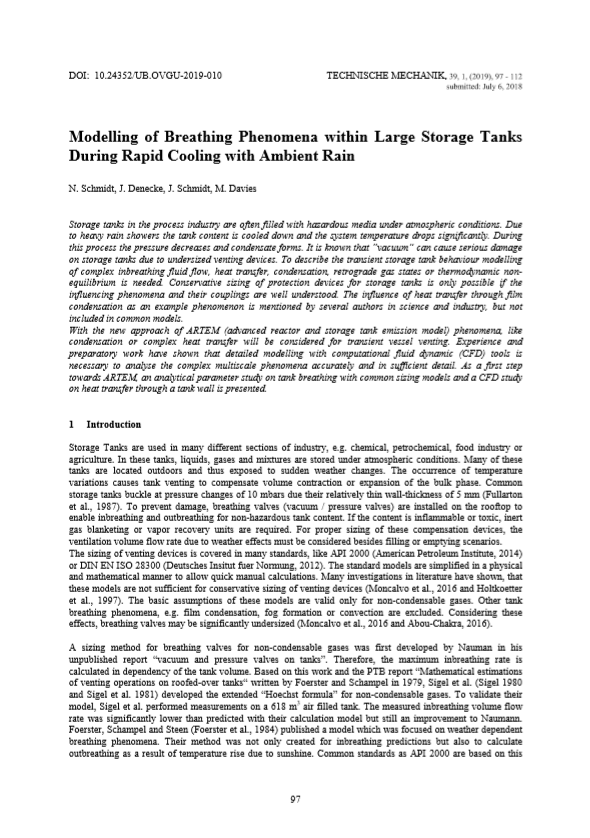Modelling of Breathing Phenomena within Large Storage Tanks During Rapid Cooling with Ambient Rain
DOI:
https://doi.org/10.24352/UB.OVGU-2019-010Abstract
Storage tanks in the process industry are often filled with hazardous media under atmospheric conditions. Due to heavy rain showers the tank content is cooled down and the system temperature drops significantly. During this process the pressure decreases and condensate forms. It is known that “vacuum” can cause serious damage on storage tanks due to undersized venting devices. To describe the transient storage tank behaviour modelling of complex inbreathing fluid flow, heat transfer, condensation, retrograde gas states or thermodynamic nonequilibrium is needed. Conservative sizing of protection devices for storage tanks is only possible if the influencing phenomena and their couplings are well understood. The influence of heat transfer through film condensation as an example phenomenon is mentioned by several authors in science and industry, but not included in common models. With the new approach of ARTEM (advanced reactor and storage tank emission model) phenomena, like condensation or complex heat transfer will be considered for transient vessel venting. Experience and preparatory work have shown that detailed modelling with computational fluid dynamic (CFD) tools is necessary to analyse the complex multiscale phenomena accurately and in sufficient detail. As a first step towards ARTEM, an analytical parameter study on tank breathing with common sizing models and a CFD study on heat transfer through a tank wall is presented.





